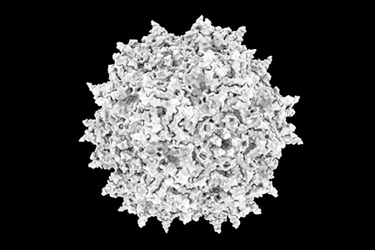Quantifying AAV Aggregation And Quality Attributes By FFF-MALS
By Chris Deng, Ph.D., Wyatt Technology Corporation

Gene delivery is one of the most promising therapeutic technologies in active development and commercialization. Adeno-associated virus, or AAV, is one of several carrier vehicles that can deliver the nucleic acids to their intended targets. At approximately 22 nm in diameter, these viruses are smaller than other viral vectors and so deliver a smaller nucleic acid payload than larger viruses, typically around 4.7 kilobases.1 On the other hand, AAVs produce stable gene expression and elicit low immuno-genic response.2 AAV-based therapeutics have already been approved by the FDA for genetic diseases such as Luxturna® by Spark Therapeutics and Zolgensma® by Novartis.
The emergence of novel AAV therapies necessitates full characterization of their properties during process development and production. Critical quality attributes (CQAs) are quantified to ensure that the final product meets requirements for efficacy and safety.
Analysis of adeno-associated virus (AAV) with size exclu-sion chromatography and multi-angle light scattering (SEC-MALS) quantifies critical quality attributes (CQAs), such as particle concentration and capsid content. However, SEC-MALS is limited in analyzing large AAV ag-gregates. Field-flow fractionation combined with MALS (FFF-MALS) is an ideal technique for resolving and ana-lyzing large AAV aggregates. Using Wyatt Technology’s Eclipse FFF-MALS system, both SEC-MALS and FFF-MALS may be performed with a single set of detectors, providing valuable orthogonal characterization of these gene therapy products.
Get unlimited access to:
Enter your credentials below to log in. Not yet a member of Cell & Gene? Subscribe today.
